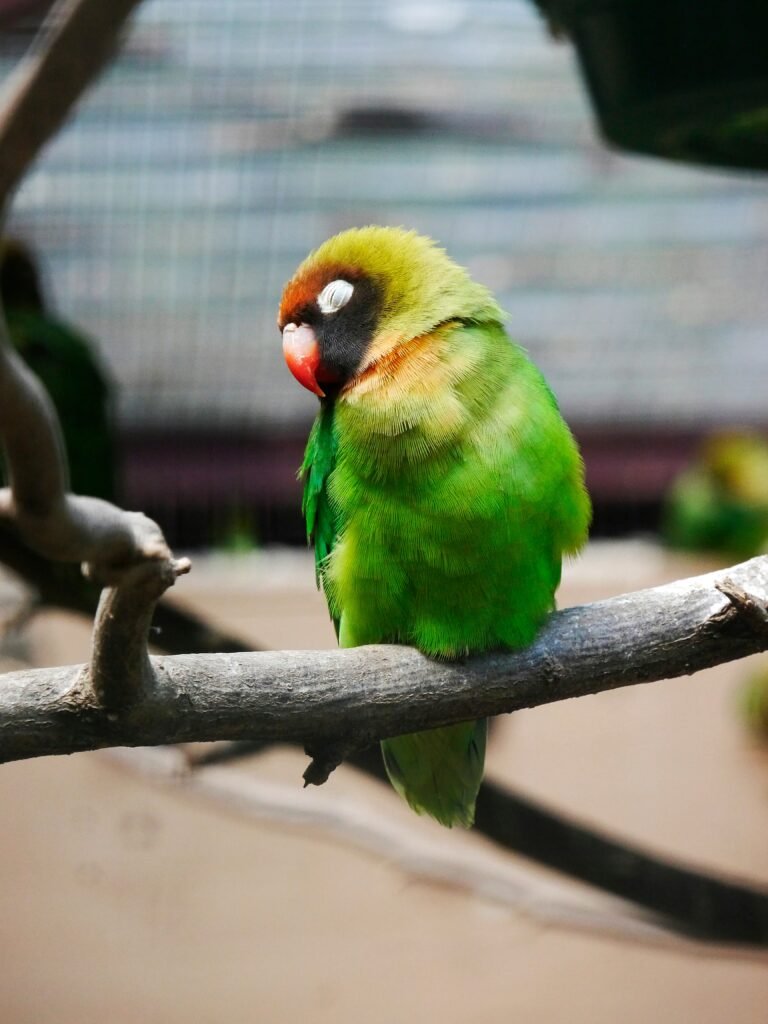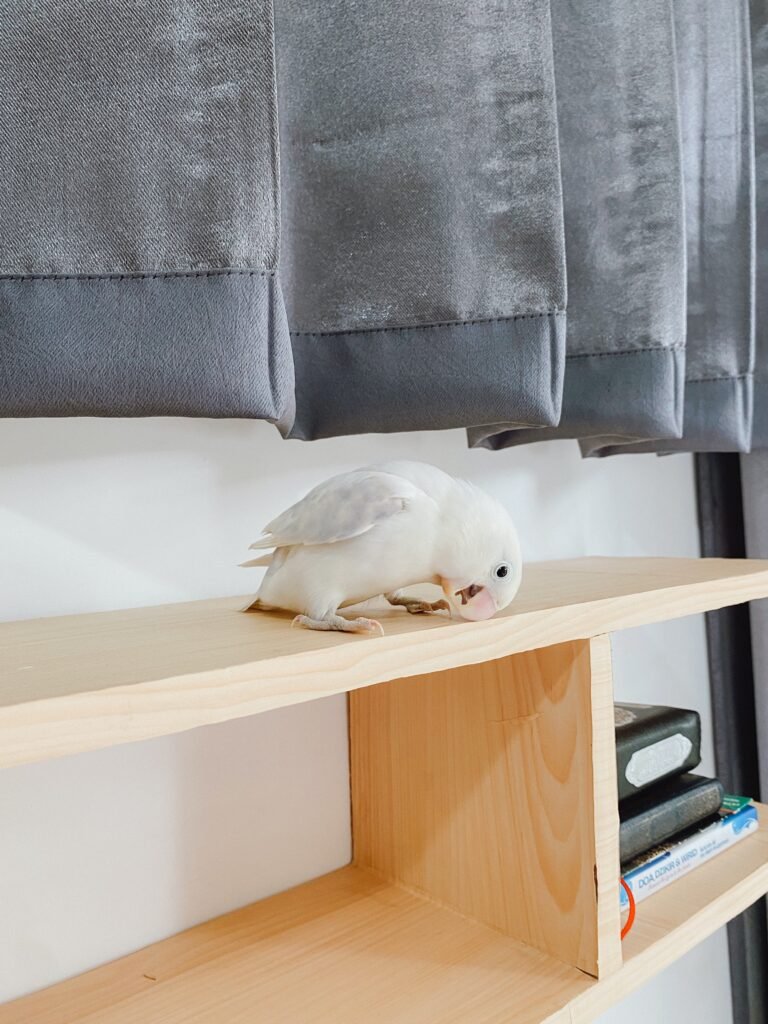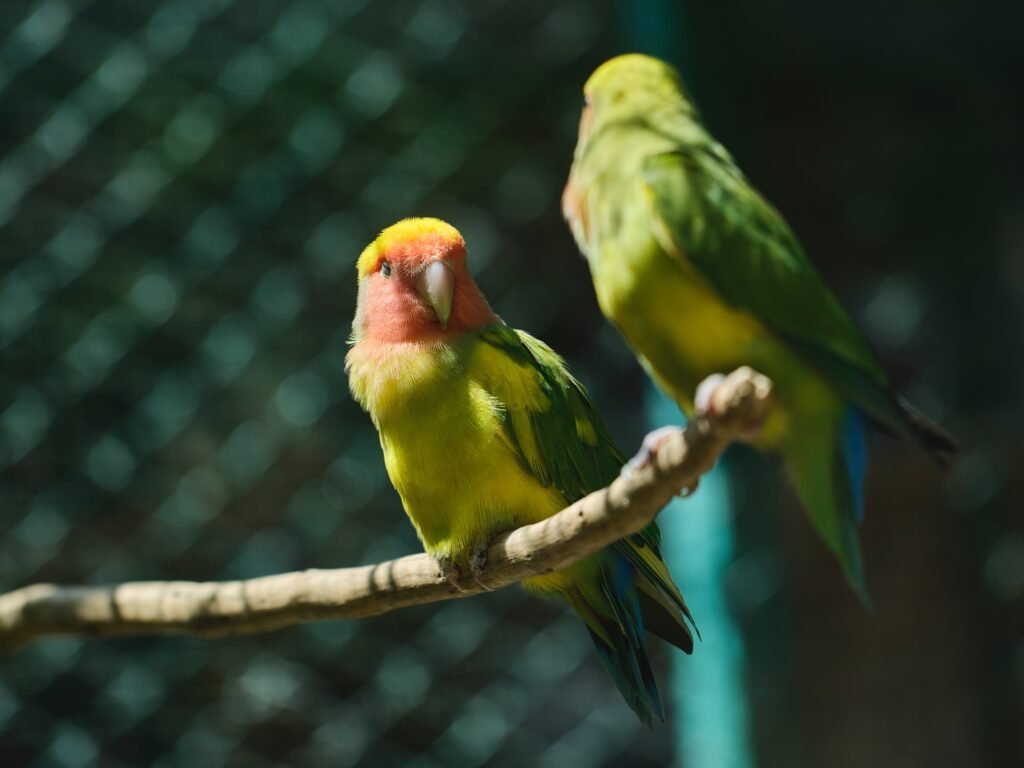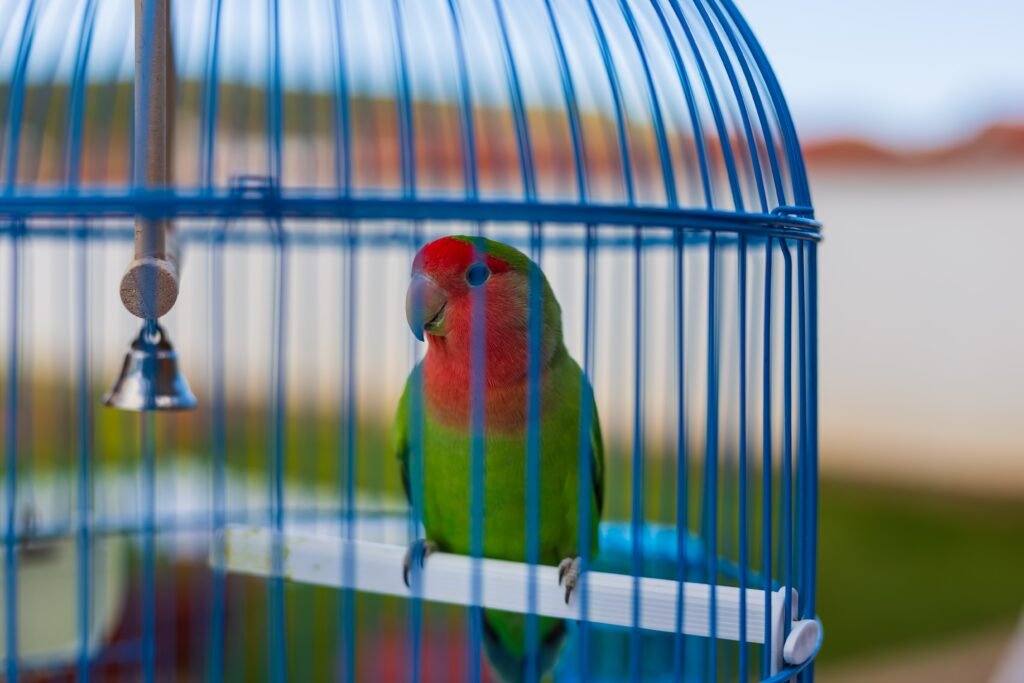 Lovebirds are beautiful, social, and intelligent birds that are often kept as pets. Just like humans, they also have their own social needs and preferences. One common question that arises among lovebird owners is whether these birds can live alone or if they require a companion. In this article, we will explore the topic of whether lovebirds can live alone and provide valuable insights for lovebird owners.
Lovebirds are beautiful, social, and intelligent birds that are often kept as pets. Just like humans, they also have their own social needs and preferences. One common question that arises among lovebird owners is whether these birds can live alone or if they require a companion. In this article, we will explore the topic of whether lovebirds can live alone and provide valuable insights for lovebird owners.
Understanding Lovebirds
Lovebirds, scientifically known as Agapornis, belong to the parrot family and are native to Africa. There are nine species of lovebirds, with the most popular being the peach-faced lovebird. These birds are known for their affectionate behavior, vibrant plumage, and strong pair bonds.
Lovebirds are highly social creatures that thrive on companionship. In the wild, they form strong monogamous bonds and spend most of their time with their chosen mate. They engage in various activities together, such as preening, feeding, and nesting. This social nature is also evident in captive lovebirds.
The Importance of Companionship
While lovebirds can form deep bonds with humans, they still require the companionship of their own kind for optimal well-being. Living alone can lead to feelings of loneliness, boredom, and even depression in these social birds. Without a companion, lovebirds may become stressed, exhibit behavioral issues, and develop health problems.
Benefits of Keeping Lovebirds in Pairs
- Emotional Well-being: Pairing lovebirds provides them with emotional support, reducing stress and ensuring a healthier mental state. Lovebirds thrive on social interaction, and having a companion can fulfill their need for companionship.
- Social Interaction: When lovebirds have a companion, they engage in important social behaviors such as grooming, playing, and vocalizing together. These activities are essential for their mental and emotional stimulation.
- Physical Stimulation: Lovebirds living in pairs have more opportunities for physical exercise, which is crucial for their overall health and vitality. They can engage in activities like flying, playing, and exploring their environment together.
- Mimicking Natural Habitat: Keeping lovebirds in pairs allows them to mimic their natural behavior, creating a more enriched and fulfilling living environment. They can exhibit their natural social behaviors and establish a hierarchy within their pair.
- Breeding Opportunities: For those interested in breeding lovebirds, keeping them in pairs is essential as they require a mate to reproduce. Pairing lovebirds increases the chances of successful breeding and ensures the continuation of their species.
Signs of Loneliness in Lovebirds
It’s important for lovebird owners to be aware of the signs that indicate loneliness or distress in their pet. Some common signs of a lovebird feeling lonely include:
- Excessive screaming or vocalization: Lovebirds may become more vocal when they are lonely, seeking attention and interaction.
- Feather plucking or self-mutilation: Loneliness can lead to behavioral issues such as feather plucking or self-mutilation as a way for the bird to cope with stress or boredom.
- Loss of appetite or weight loss: Loneliness can affect a lovebird’s appetite, leading to a decrease in food intake and subsequent weight loss.
- Aggressive behavior towards humans or other birds: Lovebirds may become more aggressive when they are lonely, as they may feel territorial or insecure.
- Decreased activity level or lethargy: A lonely lovebird may become less active and show signs of lethargy, lacking the motivation to engage in normal activities.
 Alternatives to Companion Lovebirds
Alternatives to Companion Lovebirds
While it is highly recommended to keep lovebirds in pairs, there are some alternatives for providing social interaction and stimulation for a lone lovebird:
- Human Interaction: Spending quality time with your lovebird, talking, playing, and bonding can help provide some companionship and alleviate loneliness. Lovebirds can form strong bonds with their human caregivers and enjoy interactive activities.
- Toys and Enrichment: Providing a variety of toys and enrichment activities can help prevent boredom and keep your lovebird mentally stimulated. Interactive toys, puzzles, and foraging activities can provide entertainment and simulate natural behaviors.
- Mirrors: Some lovebirds enjoy interacting with their own reflection in a mirror, which can provide a temporary source of companionship. However, it’s important to note that mirrors should be used in moderation as excessive reliance on mirrors can lead to behavioral issues.
However, it’s important to note that none of these alternatives can fully replace the companionship and social interaction that another lovebird can offer.
Introducing a New Lovebird
If you have a single lovebird and are considering introducing a companion, there are important steps to follow to ensure a successful pairing:
- Separate Cages: Initially, place the new lovebird in a separate cage next to the existing lovebird. This allows them to see and hear each other without direct physical contact. This gradual introduction helps them become familiar with each other’s presence.
- Gradual Introduction: Once both lovebirds are comfortable with each other’s presence, gradually introduce supervised interactions in a neutral space. Observe their behavior closely to ensure compatibility. Look for positive body language, such as preening or gentle vocalizations.
- Monitoring: After successful introductions, closely monitor their interactions for a while to ensure they are getting along well. Keep an eye out for any signs of aggression or stress. If any issues arise, separate them and consult with a veterinarian or avian behaviorist for guidance.
- Patience: Pairing lovebirds requires patience and time. Some birds may take longer to bond than others. Be prepared for the possibility that they may not get along. It’s important to prioritize the well-being and safety of both lovebirds throughout the introduction process.
Conclusion
In conclusion, lovebirds are highly social birds that thrive on companionship. While it is possible for them to live alone with appropriate human interaction and enrichment, keeping them in pairs is strongly recommended for their overall well-being. Pairing lovebirds provides emotional support, social interaction, physical stimulation, and the opportunity for natural behaviors. If you have a single lovebird, consider introducing a companion following the steps mentioned above. Remember, providing a loving and stimulating environment is crucial for the happiness and health of your beloved lovebird.
FAQ
Can lovebirds live alone?
No, lovebirds are highly social creatures and require the companionship of their own kind for optimal well-being. Living alone can lead to feelings of loneliness, boredom, and even depression in these social birds.
What are the benefits of keeping lovebirds in pairs?
Pairing lovebirds provides emotional well-being, social interaction, physical stimulation, and the opportunity to mimic their natural habitat. It also increases the chances of successful breeding for those interested in breeding lovebirds.
What are the signs of loneliness in lovebirds?
Signs of loneliness in lovebirds include excessive screaming or vocalization, feather plucking or self-mutilation, loss of appetite or weight loss, aggressive behavior towards humans or other birds, and decreased activity level or lethargy.
What are the alternatives to companion lovebirds?
Alternatives to companion lovebirds include human interaction, providing toys and enrichment activities, and using mirrors. However, it’s important to note that these alternatives cannot fully replace the companionship and social interaction that another lovebird can offer.


